Constructive Solid Geometry:
The 'hyperfun' Package
Paul Murrell
The University of Auckland
November 2022
Suppose we want to create a shape like this ...


Two problems:
- 3D GUI software is hard to learn.
- Code is better anyway!
The HyperFun Project
A language and interpreter for creating 3D scenes.
my_model(x[3], a[1])
{
my_model = x[2];
}

array d[3];
array vertex[3];
d = [5, 5, 5];
vertex[1] = -d[1];
vertex[2] = -d[2];
vertex[3] = -d[3];
cube = hfBlock(x, vertex, 2*d[1], 2*d[2], 2*d[3]);

array centre[3];
r = .8;
centre = [2, 2, 5];
threeA = hfSphere(x, centre, r);
centre = [0, 0, 5];
threeB = hfSphere(x, centre, r);
centre = [-2, -2, 5];
threeC = hfSphere(x, centre, r);
three = threeA | threeB | threeC;

my_model(x[3], a[1])
{
...
my_model = cube \ three
}

centre = [0, 0, 0];
trim = hfSphere(x, centre, .975*sqrt(2*d[1]*d[1]));

my_model(x[3], a[1])
{
...
my_model = cube \ three \ ~trim
}

The HyperFun Project
- Code-based model description
- Function Representation of 3D shapes
- "FRep" library of predefined shapes
- Constructive solid geometry
Three remaining problems:
-
Bespoke HyperFun (toy) language
=> hard to write -
C source code plus Windows-only executable
=> hard to install/run
=> hard to extend -
The hyperfun.org web site is no longer available!
=> hard to access!
The 'hyperfun' Package
An R package interface to HyperFun
library(hyperfun) cube <- hfBlock(dx=10, dy=10, dz=10) r <- 0.8 three <- hfSphere(c(2, 0, -2), c(2, 0, -2), 5, r=r) trim <- hfSphere(r=.975*sqrt(2*5^2)) dice <- cube - three - !trim hfp(dice)
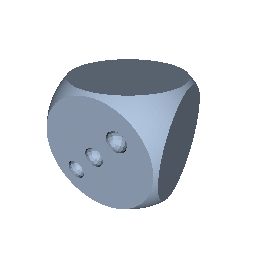
hfSphere()
HF_24_1(x[3], a[1])
{
array center[3];
center = [0, 0, 0];
sphere = hfSphere(x, center, 1);
HF_24_1 = sphere;
}
hfBlock() - hfSphere()
HF_25_1(x[3], a[1])
{
array vertex[3];
vertex = [-0.5, -0.5, -0.5];
block = hfBlock(x, vertex, 1, 1, 1);
HF_25_1 = block;
}
HF_26_1(x[3], a[1])
{
array center[3];
center = [0, 0, 0];
sphere = hfSphere(x, center, 1);
HF_26_1 = sphere;
}
HF_27_1(x[3], a[1])
{
HF_27_1 = HF_25_1(x, a) \ HF_26_1(x, a);
}
my_model(x[3], a[1])
{
my_model = HF_27_1(x, a);
}
hfDice <- function(d) {
cube <- hfBlock(dx=d, dy=d, dz=d)
r <- 8/d
three <- hfSphere(c(d/5, 0, -d/5), c(d/5, 0, -d/5), d/2, r=r)
trim <- hfSphere(r=.975*sqrt(2*(d/2)^2))
cube - three - !trim
}
hfp(hfDice(10))
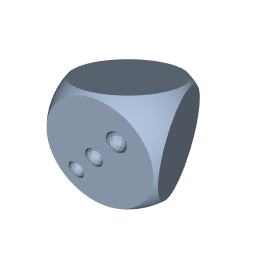
f <- function(xyz) xyz[2] xzPlane <- hfR(f) hfp(xzPlane)
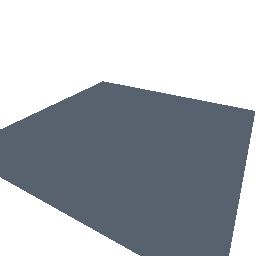
hfR(f)
HF_44_1(x[3], a[1])
{
object = hfR(x, 3);
HF_44_1 = object;
}
library(mvtnorm)
f <- function(xyz) {
xyz[2] - 10*dmvnorm(sqrt(xyz[1]^2 + xyz[3]^2)/2)
}
gaussian <- hfR(f)
hfp(gaussian)

The 'hyperfun' Package
-
R package
=> easy to access
=> easy to install/run -
R language interface
=> easy to write -
hfR() function
=> easy to extend
=> access to R functions
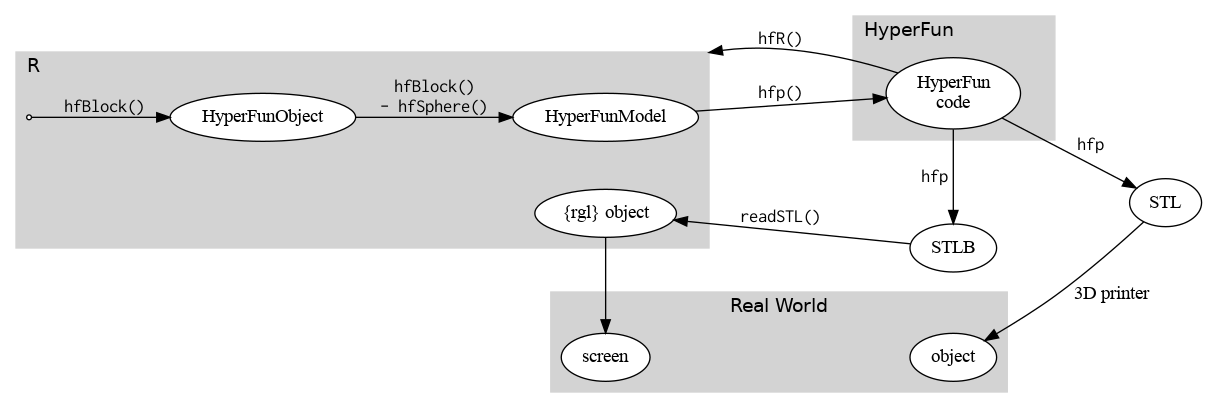
Applications
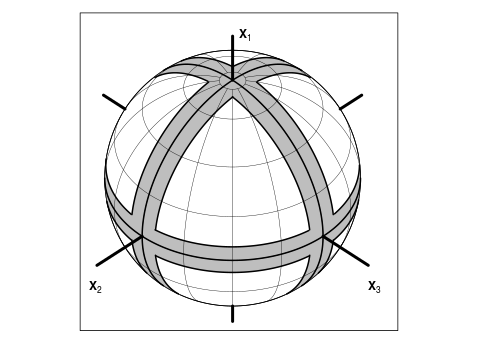

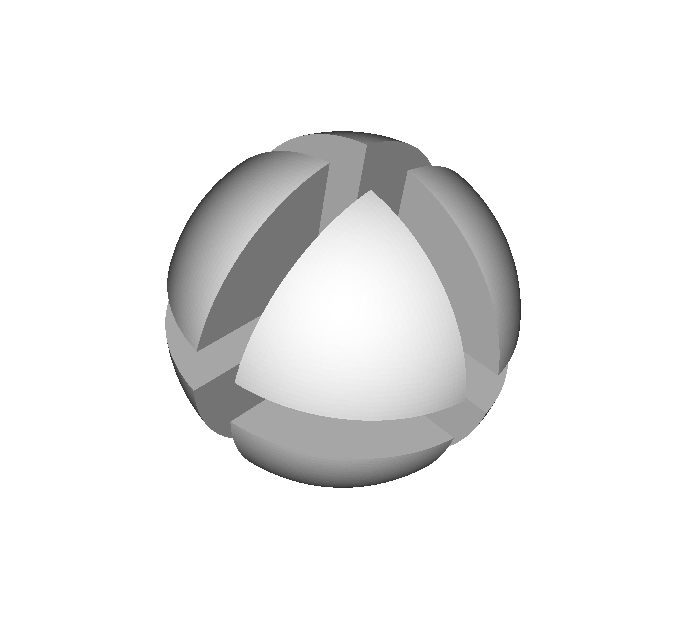

Conclusion
'hyperfun' brings together several concepts and technologies that are useful for creating 3D scenes.
- Constructive Solid Geometry
- Function Representation
- Hyperfun
- R
Resources
Acknowledgements
The HyperFun Project
hyperfun.org
(dead link)
paulbourke.net/dataformats/hyperfun/
Jack Wong extended the support for FRep library shapes in 'hyperfun' as part of his BSc Hons project.